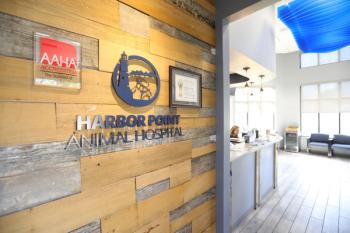
Keep your emergency clinic safe after hours
Learn how to protect your staff and keep your practice safe from robbery and violence late at night.
Emergency clinics and 24-hour hospitals must balance the need to provide accessibility to clients with injured and sick pets with the need to provide security for staff members. Not only are these practices an attractive target for robbery, their teams must deal with highly stressful situations and emotional or even impaired pet owners. Add to that situations where employees must go outside the protection of the facility to assist with injured patients, and it's easy to see why emergency and after-hours practices must take security seriously.
PUT UP BARRIERS
Of course, a practice's primary protection from robbery or violence is a set of substantial doors that lock securely—both inside and outside. All exterior nonclient doors must be locked when they're not being used. Instruct staff members to avoid propping doors open for convenience.
In addition, keep the main client entrance locked if there isn't a person monitoring the front desk—and all the time after 10 p.m. If the door is automatic, don't just turn off the sensors. You need to physically lock it. It's also a good idea to install a voice intercom—even an inexpensive wireless—at the client entrance so the staff can communicate with the person wanting admittance.
Inside the building, keep doors locked between the waiting room and the back of the hospital to prevent clients from surprising the team in the treatment room. Clients should be escorted into the exam room at the appropriate time but should not be left alone in the secure area of the practice. Just because someone is a client with a sick pets doesn't mean he or she won't get violent.
MONITOR EVERYTHING
When the staff is in the treatment room helping patients, it's difficult for them to know what's happening elsewhere unless there are video cameras placed in strategic locations. Set up security cameras near the front door and reception area to track people coming and going. Also make sure cameras are watching the pet exercise area, the parking lot, and the employee entrance.
A camera system won't stop an irate client from behaving improperly, but it will allow team members to see what's happening and come to the aid of someone under assault. And here's a bonus: A camera in the isolation room will give your staff the ability to monitor patients without the risk of contamination.
It's also a good idea to have a small window or peephole installed in exam room doors so staff can see what's happening without actually entering the room.
BUILD SAFE ROOMS
Once a violent person gets beyond the physical barriers of the facility, it's very hard to maintain control if that person is intent on harming someone. Team members need a way to protect themselves until help arrives. The best action is to use a designated safe room with a telephone inside. This room should have a solid, substantial door, and a lock that engages when the door is closed.
SOUND THE ALARMS
An automated alarm system with a panic button is essential in an emergency practice. Install alarm activation points at the reception desk and in the treatment room.
In addition, several wireless panic buttons should be available for staff members who must leave the building to assist clients with injured pets. These wireless panic buttons are beeper-sized devices that are worn on the belt or around the neck. If the staff member is in danger outside, they push two buttons on opposite sides of the device to activate an alarm and summon help.
Take these precautions so your hospital will be a safe place to work no matter what time it is.
Phil Seibert, CVT, is an author, speaker, and consultant with SafetyVet in Calhoun, Tenn. Send questions or comments to
Newsletter
From exam room tips to practice management insights, get trusted veterinary news delivered straight to your inbox—subscribe to dvm360.






